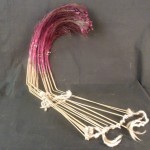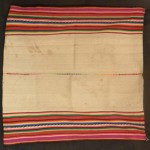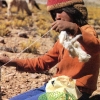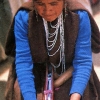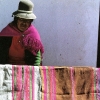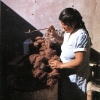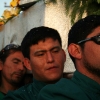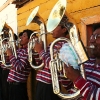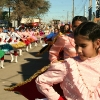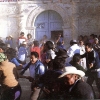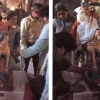Art
Until the time of the Spanish conquest, both men and women wore thick tunics made from llama or alpaca wool and drawn in at the waist with a woolen belt or sash. It was also usual to carry a small bag, known as a chuspa, that held coca leaves and other herbs. On their feet the Aymara wore leather sandals. They wore their hair long, sometimes braiding it into artistic forms. Necklaces and conical hats seem to have been used on special occasions, with the most spectacular of these worn by leaders and other high- profile individuals.
Traditional Aymara dress is now seen mainly at local community festivals. For women, this consists of an aksu, a black woolen shawl wrapped around the body and fastened with silver brooches or pins known as tupus, and a decorated sash or wak’a worn around the waist, as well as a finely woven multicolored manta-style cloth called a llijlla that covers the back and shoulders.
Aymara textile artists are renowned for their superior technique and the high quality of their pieces, which are generally clothing designs or ceremonial accessories such as chuspas or the ritual tari and inkuña cloths. Textiles were used as trade goods but were also highly valued in Aymara society, some becoming treasured family heirlooms. Music and dance are also highly important in the Aymara culture. More than just a form of entertainment, these activities play a central role in religious rituals and ceremonies. Every Aymara man plays at least one instrument, while the women can sing and dance. At ceremonies, each “cofradia” or brotherhood represents a certain segment of society and performs its own dance, which may take an entire year to prepare. The alférez or flag bearer is the individual responsible for organizing the festival and providing enough supplies for the year.
Another popular Aymara art form is silversmithing, which produced jewelry and ceremonial items such as cups and scepters. The techniques used were a mixture of traditional pre-Hispanic metalworking methods and new skills introduced in colonial times.


